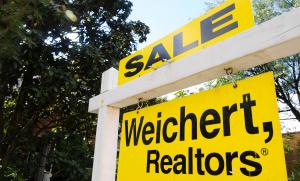Forrest Gump would have been the best economist to discuss the wisdom of encouraging lower-income borrowers to take out no-money-down mortgage loans: “Stupid is as stupid does.” Despite all the pain Americans suffered from sub-prime lending, the Federal Housing Administration (FHA) and the Community Redevelopment Act (CRA) are once again pushing low-income people with little or financial cushion into dicey mortgage loans.
Southern California real estate agents are flogging a no-down-payment, no-closing-costs and no-mortgage-insurance product called the “wealth-builder” home loan, which allows individuals to renters to buy a house and rent it to themselves. Essentially the borrower takes out a 15-year term FHA loan and pre-pays 4% to “buy down” the loan interest rate from about 4.1% to about 2.5%.
On a $400,000 house, the FHA payment at 3.25% plus mortgage insurance would be about $1,900 per month for the next 30 years. But with the wealth builder loan, the buyer puts $16,000 toward future interest and then agrees to live in the house and pay an extra $150 per month to shorten the pay-down of the 30 year loan to 15 years.
Using this fancy math, the home buyer would supposedly build up an almost magic 20% in equity in 40 months of payments. That equals $80,000 in build-up in homeowner wealth in just over three years!
But FHA no-money-down loans are limited to applicants qualifying with a credit score of 580 or better. Adding another $150 payment per month fixed payment is going to create more financial stress on a low-income borrower and drop his or her credit score. FHA finances borrowers with credit scores between 500 and 579, but the borrower is required to put 10% or $40,000 down for the FHA to loan them $360,000.
Squirrely financial engineering was flogged before the financial crisis by progressives like Congressman Barney Frank (D-MA). As the principal advocate for using the government’s authority to force lower underwriting standards for housing finance, Frank in 2003 said, “I want to roll the dice a little bit more in this situation toward subsidized housing.”
But the latest iteration of rolling the dice “a little bit more in this situation toward subsidized housing” is coming from the ultra-conservative American Enterprise Institute (AEA). By hooking up with liberal housing advocate Neighborhood Assistance Corp. of America (NACA), AEA was able to coerce Bank of America and Citibank to chip in subsidies to fulfill their obligations under the 1977 Community Reinvestment Act, which allows a sub-prime 2.5% funding on wealth builder single-family loans up to $400,000.
The last roll of the dice in sub-prime cost caused total global losses of about $15 trillion, according to Mark Adelson, the former Chief Credit Officer of Standard & Poor’s. What was supposed to be charity to get the poor into home ownership was really just a cover story for huge risk-taking by lenders.
Adelson analysis blames the sub-prime crash for $10-to-$12 trillion drop in value of world stock markets, $5.7-to-$12.8 trillion plunge in U.S. output over the next decade, and $750 billion-to-$2 trillion on losses from U.S. residential mortgage loans.
According to an article in the Los Angeles Times, OneWest Bank in Pasadena, which is awaiting regulatory approval to merge with federally bailed-out New York business lender CIT Group, is considering making similar no-down-payment, no-closing-costs and no-mortgage-insurance loans to satisfy its Community Reinvestment Act obligations.
Forrest Gump’s mother observed, “Life was like a box of chocolates. You never know what you’re gonna get.” Yet if asked what you get from sub-prime loans, Forrest Gump probably would have said, “An upset stomach.”

COMMENTS
Please let us know if you're having issues with commenting.